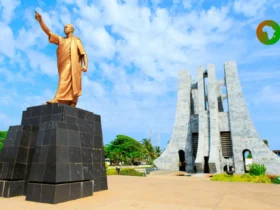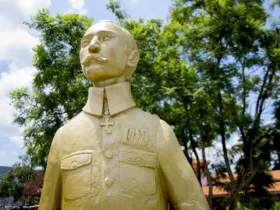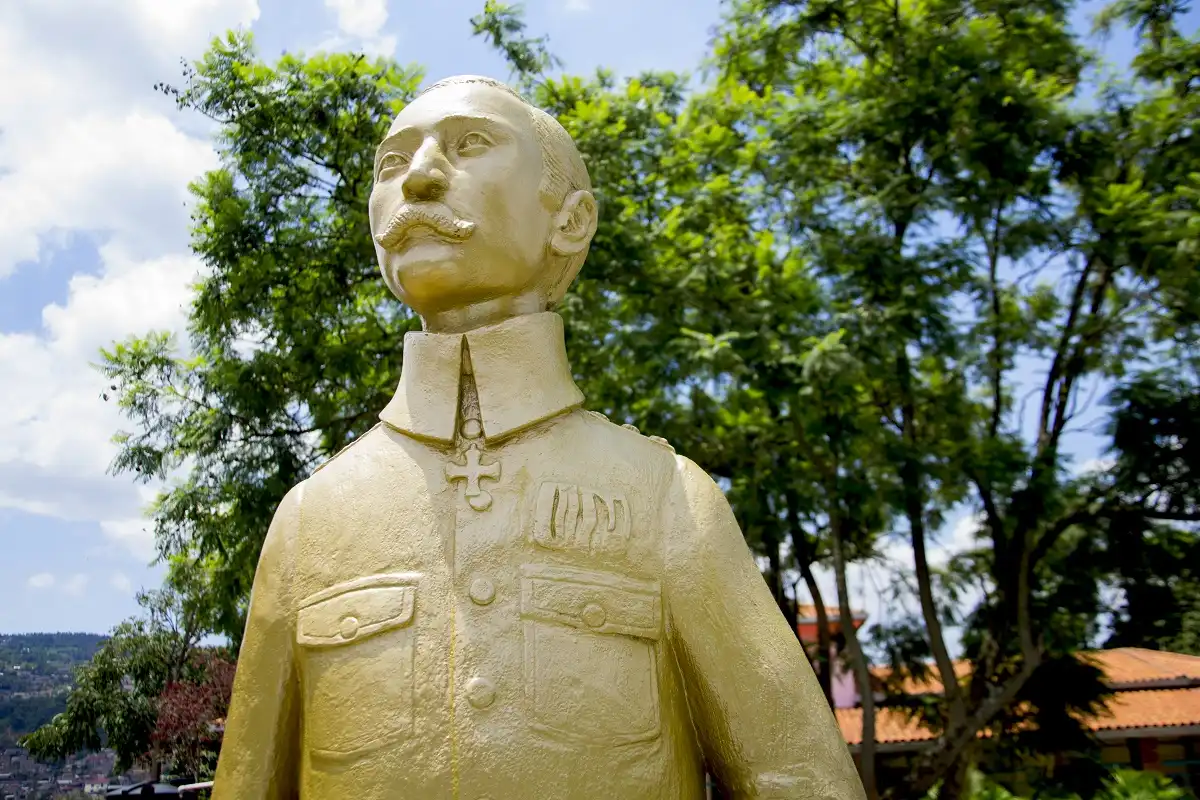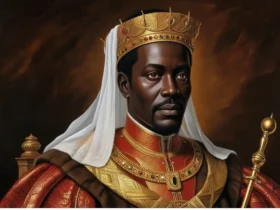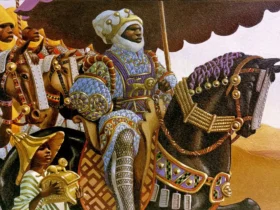Richard Kandt (1867–1929) was a German physician, naturalist, and one of the most notable explorers of the African continent during the late 19th and early 20th centuries.
Best known for his pivotal role in exploring and documenting Rwanda’s landscapes and cultural heritage, Kandt’s work bridged the gap between Europe’s understanding of Africa and the realities of the continent’s unique ecosystems and civilizations.
Key Achievements of Richard Kandt
- Discovery of the Nile’s Source: Identified Lake Kivu as a primary tributary of the Nile.
- Documentation of Rwanda: Provided one of the earliest comprehensive records of Rwandan society and geography.
- Founding of Kigali: Established Kigali as Rwanda’s administrative capital.
- Publication of Caput Nili: Authored a seminal work blending scientific insights with travel narratives.
- Promotion of Ethical Governance: Advocated for respectful engagement with local communities during his tenure as Rwanda’s first Resident.
Early Life and Scientific Pursuits:
Born on December 17, 1867, in Posen (Poznań, Poland), then part of the German Empire, Richard Kandt grew up in a middle-class family.
His early life provided little indication of the extraordinary path he would later choose. He pursued a formal education in medicine, studying at the universities of Berlin and Würzburg, graduating as a physician.
This medical training, rather than a background in cartography or geography, would eventually prove invaluable to his African expeditions. However, his interests extended beyond the confines of the medical world. He was captivated by stories of exploration, particularly those focused on the still-largely-unmapped African interior.
Unlike some European adventurers driven by a purely imperialistic agenda, Kandt’s primary motivations were a genuine scientific curiosity and a desire to understand the physical, geographical, and human landscapes of Africa.
He was not simply seeking to conquer or exploit; his expeditions were underpinned by a dedication to documenting observations, collecting specimens, and contributing to the existing body of knowledge about the continent.
The Call of Africa: Early Expeditions and the Lualaba River Search:
The late 19th century saw intense competition for the control of African territories, and with it, a surge of mapping and exploration.
Driven by this spirit of enquiry and fueled by a desire to make his mark, Kandt embarked on his first significant African expedition in 1896 with the objective of tracing the course of the Lualaba River in what is now the Democratic Republic of Congo.
This river had long puzzled Europeans as it was a possible source of the Nile, and the subject of intense debate among geographers.
Kandt’s journey was arduous and fraught with danger. The Lualaba region was largely unexplored by Europeans, and he faced numerous challenges that included treacherous terrain, unpredictable weather, outbreaks of deadly diseases like malaria, and encounters with hostile local populations.
Despite these difficulties, Richard Kandt ‘s medical training proved crucial in his survival and the management of his expedition.
He meticulously documented his observations, collected geographical and botanical specimens, and even attempted to treat some of the local populations he encountered.
While he did not ultimately demonstrate a definite link between the Lualaba and the Nile (later demonstrated by others to be part of the Congo river system), Richard Kandt ’s expedition was significant for its detailed geographical and ethnological data.
It demonstrated his capacity for endurance and methodical exploration, serving as a crucial stepping stone in his transition from a physician with an interest in Africa to a seasoned explorer.
The Nile Quest: Unveiling the Sources in Rwanda:
Kandt’s ambition was never truly satisfied by his Lualaba expedition. He became increasingly drawn to the ongoing mystery of the Nile’s sources.
He believed that a major source lay further East than previously imagined, and this conviction led him to focus his attention on the region around Lake Victoria.
At the time, there was a consensus that the Nile rose from Lake Victoria, but Richard Kandt was among the first to explore and map the complex network of rivers that feed into the lake, specifically the Kagera River system.
In 1897, Richard Kandt set out on a new adventure, this time venturing into the region that would later become Rwanda.
This was a pivotal moment in his life and the history of the region. He arrived in a landscape largely untouched by European influence, inhabited by several ethnic groups, with the most prominent being the Tutsi, Hutu, and Twa.
The area was ruled by the Kingdom of Rwanda, a powerful and hierarchical society with a long history.
Over the next fifteen years, Kandt undertook several expeditions throughout the region. He systematically explored and mapped the intricate network of rivers, lakes and mountains.
Richard Kandt ‘s work proved crucial in understanding the hydrography of the region and he identified the Kagera River as the longest and most important feeder of Lake Victoria.
He diligently followed the Kagera’s tributaries to their source, proving that one of the most distant headwaters of the Nile was, in fact, located in the mountains of Rwanda.
His meticulous observations established that the Nyabarongo River, one of the primary tributaries of the Kagera, was fed by springs in the Nyungwe Forest, deep in the heart of Rwanda. This, he argued, was the “true” source of the Nile.
While not the popular understanding of the Nile’s source today, Kandt’s work on the Kagera and Nyabarongo was critical to the scientific understanding of the river system.
It established him as a leading authority on the geography and hydrology of this region within central Africa.
The Scientist and the Administrator: Kandt’s Complex Legacy in Rwanda
Richard Kandt ‘s contribution to African exploration extends beyond his hydrological discoveries. In 1907, Germany established a colonial presence in Rwanda, and Kandt was appointed the resident of the Rwandan colony, at first based in Kigali.
This appointment represented a shift in his career from a primarily scientific and exploratory role to that of a colonial administrator.
As resident, Richard Kandt was charged with establishing and maintaining German authority. This position placed him in a complex moral landscape, where his scientific curiosity intersected with the colonial ambitions of his homeland.
He was directly involved in the delicate process of managing the existing socio-political landscape of Rwanda, dealing with the internal power struggles within the Rwandan kingdom and the ambitions of the various ethnic groups.
He also had a role in implementing new policies, developing infrastructure, and attempting to establish an economic system that would benefit the German Empire.
Richard Kandt ’s approach to colonial rule, while rooted in a paternalistic vision of European superiority, was relatively enlightened (by the standards of the day).
He believed in the importance of respecting local customs and tried to minimise the violence that often characterised other colonial ventures.
He aimed to implement a form of “indirect rule,” working with existing Rwandan structures where possible. He even learned the Kinyarwanda language, an unusual effort among European administrators of the time.
He promoted the cultivation of cash crops like cotton and coffee, encouraged trade, and oversaw the construction of schools and infrastructure.
However, it would be a mistake to portray Richard Kandt as a benevolent colonizer. His position as German Resident inherently implicated him in the dynamics of colonial power, which involved the subjugation of the native population to fulfill the economic and political needs of the European empire.
His policies, despite their intentions, contributed to the gradual erosion of Rwandan sovereignty and the imposition of European norms.
Moreover, his observations, however scientific, were not always free from the racial bias of his era, and his descriptions of the Rwandan people, despite their detailed nature, were colored by the prevailing European views of Africans.
Later Life and Legacy:
Richard Kandt dedicated much of his life to his adventures and his administrative role in Africa, finally departing in 1914, shortly before the start of World War I.
The outbreak of the war and the subsequent loss of German colonies to the Allied forces effectively ended Germany’s colonial presence in Africa, and consequently Richard Kandt ‘s role in Rwandan history.
He returned to Germany, where he continued to write and lecture about his explorations, but his time in the field was finished.
Richard Kandt died in 1918, at the young age of 51 in Nuremberg. He left behind a complex and somewhat contradictory legacy.
He was a dedicated scientist and a meticulous observer, whose work revolutionized the understanding of the Nile River’s sources.
He was also a colonial administrator, involved in the imposition of European rule on an African society.
His meticulous documentation of the region’s geography and ethnography remains invaluable. His detailed maps, his descriptions of the flora and fauna, and his accounts of Rwandan society are all important historical records.
The “Kandt House” museum in Kigali, Rwanda, stands as a testament to his presence and work in the country. His books, including “Caput Nili,” (1904) and “Zwischen Nil und Kongo,” (1907) provide insights into his experiences and perspectives.
Conclusion: A Complex Portrait
Richard Kandt was not a simple figure. He was a scientist driven by a desire for knowledge, an explorer who braved the challenges of the African interior, and a colonial administrator caught in the complexities of imperial power.
He was a product of his time, and his story is a mirror reflecting the multifaceted aspects of the European engagement with Africa in the late 19th and early 20th centuries. His legacy is a complicated one, offering both admiration for his scientific achievements and critical examination of his role in the colonial era.
Ultimately, Richard Kandt remains an important figure, both for his contribution to the understanding of the Nile and for the complexities he embodies in the history of Africa and European colonialism.
His life serves as a powerful reminder that history is rarely black and white, and that the legacies of even the most well-intentioned individuals can be fraught with contradictions. His impact on Rwanda, both positive and negative, remains a subject of ongoing discussion and reflection.
see also Kigeli IV Rwabugiri: A Top Historical Titan of Rwanda























